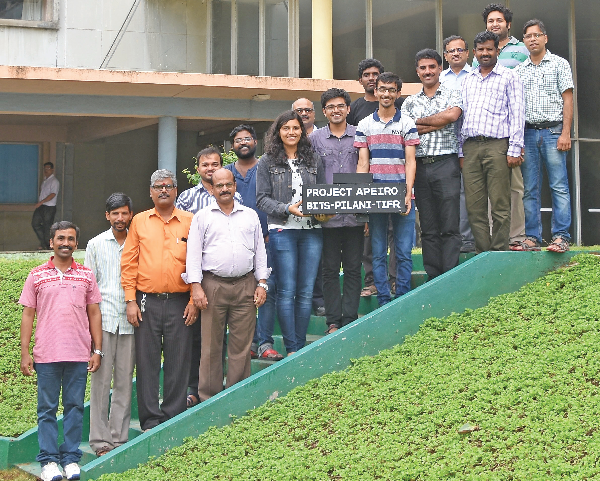A group of students from BITS, Pilani – Goa are all set to launch India’s first student-led near space micro-satellite which aims to determine the cosmic radiation flux in the lower stratospheric regions of the earth’s atmosphere to help determine radiation exposure risks to aviation and space flight crews

When Sanket Deshpande, Lucky Kapoor and a few other friends ( Pankay Tiple, Vibhav Joshi, Shivangi Kamat and Aishwarya Praveen) first decided to do an experimental project on cosmic radiation back in 2014, they had no definite idea about what they were really getting into. “Some of our seniors already had this idea of measuring cosmic radiation and how it affects humans and when we joined college we decided to work on this as we wanted to do something related to space,” states Lucky Kapoor.
Cosmic rays, which were discovered by Victor Hess in 1912, are high-energy charged particles that originate outside the earth’s atmosphere. These particles are generally the nuclei of atoms but can also be other charged particles. At sea level, the atmosphere provides sufficient shield from these particles that continuously strike the earth from all directions but with air travel becoming increasingly popular, the amount of exposure to this radiation need to be ascertained.
It was just an idea at first, admits Kapoor but slowly things began to take shape. The group got in touch with the Tata Institute of Fundamental Research (TIFR) and Dr Satyanaryana mentored them in this project –Project Apeiro– which took three years to complete.
Although similar experiments have been carried out by qualified scientists in institutes around India, this is the first student led team which has worked on and will be launching a near space micro satellite. Near space is the name given to the region above the altitudes for commercial flights and below the orbit of the satellites.
“Our focus too is a bit different. While earlier experiments concentrated on finding out about the particles and how they behave, what we are doing is looking into the radiation caused because of these particles and how these affect the human body,” states Kapoor. A similar project - Radex has been done by NASA in 2016 wherein they collected data for USA. “The aim is to make a model where you can predict real time space radiation. For instance if you are going from Los Angeles to New York it can predict the amount of radiation you will be exposed to. Such a model can be beneficial to approve paths or to check the health of air crew and pilots so as to prevent them being over exposed,” says Kapoor, adding that their project aims at collecting data for the Asia specific region.
The micro-satellite will be launched on February 2 at 12.15 am by the National Balloon Facility at TIFR-Hyderabad who will also provide the required balloon. “We have particle fixtures in our payload which will measure the cosmic rays that are falling on the detectors. These will be measured from zero level to a height of around 25 kms,” explains Kapoor. The payload will take about one and half hour to reach 20 kms following which it will float there for about an hour. For the next half an hour it will go up to a height of 25 kms and float there for another hour. Once the group is satisfied with the data collected , they will terminate it and the payload will come down. “After getting the date we will co-relate it with NASA’s model for predicting spca radiation and then submit it to the science community to see how it is accepted,” says Kapoor.
While the microsatellite was earlier fixed to be launched in December, owing to an issue with an electronic device, it had to be delayed. “As the wind pattern in January is not favorable, we had to wait for February to launch it instead. The time (12.15 am) was chosen because there is minimum air traffic at this time. Also, during the day there are more particles coming from the sun but for the moment we want to concentrate only on other sources,” says Kapoor, adding that the launch will be streamed live from their Facebook page.